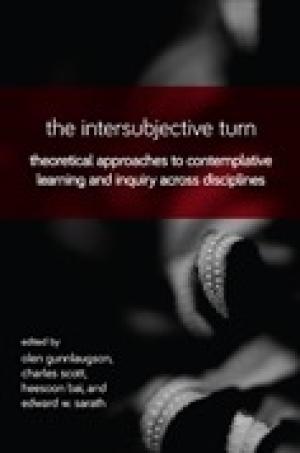Resources

Building the Field of Higher Education Engagement: Foundational Ideas and Future Directions presents twelve landmark articles from 1996-2012 that contributed significantly to the emergence of the field of engagement. Along with the articles, the book presents updated commentaries and responses by the original authors or noted scholars to the questions they proposed. The format of this publication is thoughtful as each chapter presents conversation-provoking questions about engagement across academic disciplines. In addition, Chapter 13 is a prospective look into the future. Nine authors provide their insights to what engagement may look like in the next two decades. This book is valuable to those in the specific field of religious education as it strives to rethink the work of the academy. Lorilee Sandmann states that colleges and universities remain one of the greatest hopes for intellectual and civic progress because they search for answers in light of pressing problems (xiii). Furthermore, higher education in its highest ideals is committed to the scholarship of engagement. She defines engaged scholarship as a mutual relationship between academia and the community that leaves a positive legacy for all partners (xiv, 196). These concepts challenge established notions about higher education. First, this book examines the most foundational values of education. Engagement should be built from these values and not the expectation to do research and achieve tenure. As a result this creates ripples in the culture and expectations of the academy so that a new or revised model for higher education may emerge. Second, this book challenges the way educators see themselves and how they are to engage the community. The community has come to view them as ivory tower elites. Conversely, this volume challenges institutions and educators to participate in outreach to the community at large. The text provides several interdisciplinary examples of outreach. It is important because it generates conversations about the role of faculty and their role in outreach. This is a valuable contribution as the book also gives suggestions on how engagement and outreach can be measured so as to be included in the tenure process. Another valuable idea is the notion that knowledge is now non-linear. It was expected that the academy would study, research, and provide solutions for the world. The consequence is that the academy does not answer the questions the community is asking. In a non-linear world, the community has knowledge. The academy must necessarily be more engaged in the world that surrounds it. Through interdisciplinary dialogue, the text provides valuable insight into these conversations. For theological educators this is an important book because it provides language to understand the complex relationships between the community and the academy; as well as that between faculty and administration. It causes the reader to reimagine the requirements of tenure and the meaning of higher education in a fast-changing cultural milieu. This book conceptualizes the changes in the work of the academy so that one is better prepared to engage an institution’s culture and values so that it may be more true to education’s highest ideals and values.
This moment of crisis has rendered most of us speechless, unable to articulate or reflect upon the unfolding crisis. What other kinds of knowledge will assist us with grappling with this kind of suffering, isolation and grief? What metaphors, similes, sounds, body postures/movements, or ways of knowing will aid us? Dr. Nancy Lynne Westfield hosts Dr. Carolyn Medine (University of Georgia).

Based primarily on case studies, Identity and Internationalization in Catholic Universities brings readers a global perspective on the ways in which Catholic universities are grappling with questions of identity and internationalization. Although many books are limited to a single country or region, this edited collection includes contributions from Latin America, the United States, Asia-Pacific, and Europe. The result is an informed and global account of institutional and socio-political experiences that are shaping and being responded to by Catholic universities today. This book would be helpful for several audiences. Most obviously, this book would benefit administrators in Catholic higher education who regularly face questions not only of identity and internationalization, but also questions of academic rigor, institutional relevance, and others that the various contributions explore in different ways; this book will put these administrators’ institutional commitments into conversation with other similar institutions. Also, because identity and internationalization are not unique to Catholicism, many universities of secular or other religious heritage would find these contributions insightful for their own institutional contexts. Additionally, Catholic centers that seek to advance issues related to multiculturalism, globalization, international collaboration, issues of common concern (such as climate change or peace studies), or Catholic identity would likewise benefit from learning the ways that these are being discussed among other Catholic institutions in a variety of cultural contexts. Finally, this book would help instructors of practical theology or religion and society courses to have a more global perspective on the ways identity and internationalization affect Catholic organizations. Equipped with this book, faculty could better explain the ways a shifting Catholic identity and a changing society affect Catholic schools, hospitals, nonprofits, and others. Perhaps a more universal and unique contribution of this book is the frame that the introductory chapter provides for the forthcoming chapters. In walking readers though the impact of identity and internationalization within Catholic universities and providing insights for crafting a strategic plan to more intentionally address these, all of the above audiences are provided with practical ways to navigate the challenges they are facing. Likewise, the chapters that follow each illuminate the ways mission and vision are enabled or constrained by identity, internationalization, and the strategic plan of the university. The editors could have expanded the reach of their book by providing more theory and analysis, the dearth of which is demonstrated in the lack of scholarly resources in many of the chapters. A more extensive theoretical base would have embedded the valuable empirical findings in a stronger theoretical frame, making the insights more portable to readers. Still, my desire for a stronger theoretical underpinning to this collection does not take away from the fact that this book makes a valuable contribution to the conversations surrounding identity and internationalization in higher education. Identity and Internationalization in Catholic Universities is indispensable not only for those in leadership in Catholic higher education, but also for those leading Catholic schools, hospitals, nonprofits, networks, Bishops conferences, and other organizations that seek to make a distinctly Catholic impact in an increasingly global and pluralist world.

Contemplative pedagogy has become quite popular over the past decade (Jacoby, 2019). This book builds on previous contemplative pedagogical scholarship (Barbezat and Bush, Contemplative Practices in Higher Education, Jossey-Bass, 2014; Simmer-Brown & Grace, Meditation and the Classroom, SUNY Press, 2011), especially a prior volume by the same editors—Contemplative Learning and Inquiry across Disciplines (Gunnlaugson et al., 2014). This book focuses on second-person perspectives or intersubjectivity, which the editors note can be represented spatially as between people, rather than subjectively inside or objectively outside them. It seeks to redress the tendency in contemplative studies to focus on first-person, personal experiences or third-person, objective study and observation of individuals engaged in contemplation. The Intersubjective Turn would interest contemplative studies scholars as well as instructors with a previous background in contemplative pedagogy. Those unfamiliar with contemplative approaches to higher education would benefit from first consulting the work of Barbezat and Bush (Contemplative Practices in Higher Education, Jossey-Bass, 2014) or the previous volume (Gunnlaugson et al., Contemplative Learning and Inquiry across Disciplines, 2014), especially Arthur Zajonc’s overview of contemplative pedagogy in higher education and Harold Roth’s proposed pedagogy for contemplative studies. Although instructors who teach in public universities and colleges may find it challenging to adapt some of the contemplative approaches to their institutional context, those at private institutions and seminaries may encounter less difficulty in applying the contemplative pedagogies discussed. Each article emphasizes the value of incorporating intersubjectivity into one’s contemplative pedagogy and focuses on particular classroom activities that promote such intersubjectivity. Mirabai Bush discusses her “Just Like Me” exercise developed for Google’s Search Inside Yourself program, where participants first engage in self-compassion and then become aware of what they share with others, and her “Mindful Emailing” activity where participants write a response to an email, but before sending it, lean back, take three deep breaths, re-read their response and imagine how it might be received by the other person. David Lee Keiser describes a pedagogical practice that addresses students’ discomfort at being stared at: a “stage exercise” where students mindfully walk to the front of the auditorium, pause and take a breath, make eye contact at least once with everyone in the room, then mindfully walk off stage, taking another breath and then returning to their seat. Lyn Hartley advocates deep dialogue in which students explore uncertainties and questions that no one has answers to, which allows for transformative learning. Judith Simmer-Brown draws on Gregory Kramer’s method of “insight dialogue” to have students sit in dyads, reflecting on challenging aspects of their spiritual or personal journeys as they speak for three minutes and then return to silence and deep listening. David Forbes uses mindfulness as a way for students to reflect on unexamined assumptions and conditioned patterns of thought in order to move towards a postconventional, self-authorized consciousness that tolerates ambiguity and agile thinking. Joanne Gozawa emphasizes the value of students not only doing contemplative practices, but “not doing” them by listening to silence and embodying a posture of receptivity. Other chapters discuss theological and theoretical reasons for engaging in intersubjective contemplative practices, advocating contemplative inquiry as a means of promoting empathetic connection.

The editors of this volume address a gap in scholarship by bringing Problem-based Learning (PBL) into fruitful dialogue with the separately developed Threshold Concepts Framework (TCF). The goal of the volume is to show how TCF enhances the understanding and practice of PBL. None of the authors addresses the teaching of theology or religion; nonetheless, each chapter offers some insight that could readily lend itself to a better understanding of the process of learning in the theology or religious studies classroom. The collection begins with four strong introductory chapters addressing the basics of these two pedagogical approaches and their relationship to each other. The next three chapters lay out how these theories can be found across such different disciplines as engineering education, chemical engineering design, and professional development for university teachers. The final three chapters report on research projects that point out new TCs in additional disciplines. PBL is an educational practice that presents students with real world problems that are not neatly defined and do not have an obvious solution. Students work in groups to decide what further knowledge they need, how to obtain it, and how to represent it. The TCF works with the points at which students cross in a significant way from familiar ways of framing knowledge to a point of disorientation and then to incorporating new knowledge. Savin-Baden and Tombs describe TCs and PBL as independently developed pedagogies but natural partners nonetheless. This is true in two ways. PBL has long described itself as deliberately constructing a path for students toward and through “troublesome” knowledge. Suitable problems for PBL are those that lead students to a point of being stymied in their existing level of knowledge as they address wicked problems that are not easily classified and solved. Often the PBL method is itself troublesome to students as they wrestle with an educational process that shifts responsibility from teacher to student and from individual to group. Operating separately, TCs identify and work with concepts either particular to a discipline or more generally, that require a student to leave the space of prior knowledge and self-understanding and enter into a liminal state in which prior knowledge is no longer viable but new concepts or self-understandings are not yet grasped or stabilized. TCs give attention to the type and amount of scaffolding that is necessary to prepare students and help to direct them through these impasses. Although the TCF was originally developed through consideration of threshold concepts in particular disciplines, the editors go beyond those boundaries to consider transdisciplinary concepts including critical thinking. Even though the chapters devoted to particular disciplines are not all obviously applicable to teaching theology and religion, their authors succeed in making the target ideas more understandable. The chapter most valuable for teachers of theology and religion is the contribution of Jayne Lewis, “Empathy and Problem-based Learning.” People unfamiliar with these two areas will find enough guidance to read the discussion fruitfully; that being said, this collection is not an entry-level introduction but an opportunity for deeper development for those already familiar with one or both of these approaches. There are more proofreading issues in this book than one would expect. Skipped words and puzzling phrases slow readers down while they grapple with making sense of the text.

Demographic and societal shifts in religion—to say nothing of higher education challenges—gnaw at North American theological education. The turbulence around the religious and educational environment is constant, and the essays in this volume acknowledge these challenges while exploring methods to move forward. The essays were written by seminary presidents and university leaders of various traditions to honor Daniel Aleshire, longtime executive director of the Association of Theological Schools (ATS). The first four essays address the challenges faced by theological schools while the final two essays examine the rise of non-Christian traditions in North America. Outside of the six essays, a helpful introduction provides coherence to the book, while the honoree of the volume supplies an afterword. The first two essays by David Tiede and Martha Horne soberly name the disruptions around theological education. Tiede raises four pressing challenges and how Lutherans (ELCA) are addressing them: the digitization and marketing of everything; the cost/debt spiral; the need for leadership change; and the focus on educational results. Horne provides a call for change through the story of Desmond Tutu’s awakening to how theology is shaped by different historical, sociological, and cultural contexts. This should drive an ability for Anglican comprehensiveness, anchored in communion, worship, and mission, that allows for theological inquiry and debate. Donald Senior focuses on the type of Roman Catholic seminary candidate needed for the emerging needs of this world. Priestly formation from the work of Pope John Paul II roots this vision and is then joined with values from Pope Francis’s vision of the joy of the gospel, care for creation, and mercy. While other essays focus on curriculum or mission, Senior calls for a counter-cultural vision for theological education embodied through its people. Evangelical pragmatism and its aversion to seminary training is the focus of Richard Mouw’s essay. Mouw encourages theological schools to listen to concerns and questions of those in ministry. Theological educators must make the case for theological education, but must do so with an empathetic spirit throughout the conversation. The final two essays by Douglas McConnell and Judith Berling examine multifaith engagement and its implications for pedagogical concerns. McConnell grapples with how to engage a multifaith context from an evangelical framework. He calls for convicted civility rooted in hospitality and illustrates this through an institutional case study. Berling traces the history of multifaith theological education in mainline seminaries and explores ongoing opportunities and challenges. She raises the many ways that tradition can be both understood and shaped; this flexibility in tradition should aid in classroom pedagogy and interreligious learning. The volume as a whole encourages faculty, administators, stakeholders, and institutions to discern their core identity and mission. This, in turn, should drive what doctrines/affirmations and practices of life are central to a school’s tradition. While not prescriptive in methodology, the essays provide a quick read for busy stakeholders that can foster reflective dialogue on mission, tradition, and vision.

Academics trained in different fields are sometimes at a loss of how to conduct research in the scholarship of teaching and learning (SoTL). Does SoTL have its particular methodologies different from those of other fields? Who are the audiences of SoTL and how can one join the conversation? Is there a quick guide, which introduces the diverse approaches with illustrations? Can we learn from the experts, who can provide advice and point out the pitfalls? This book is helpful for beginners to think more clearly of the scope and research in SoTL, and it also provides insights for seasoned scholars who want to learn from others in diverse disciplines. The book is divided into three parts. Part 1 focuses on the foundations of SoTL, including discussion of the origins of SoTL projects, ways of identifying research issues, the relationship between educational research and SoTL, and the alignment of research methods with purpose. In Part 2 contributors offer examples of specific research methods with examples. These methods include questionnaires, classroom observation, conducting interviews, close reading of student artifacts, and the use of think-aloud protocols developed by cognitive psychologists. Part 3 focuses on making impact and touches on writing and reading SoTL and participating in SoTL conferences. In putting the book together, editor Nancy L. Chick does not want to introduce SoTL in the abstract, but wishes to illumine critical moments in practice through vignettes and examples. Each chapter is like listening to a colleague reflecting on a particular issue in SoTL, drawing concrete examples from classroom practice and research. In the chapter on using questionnaire, for example, the author does not provide a step-by-step guide to creating a questionnaire. Rather, the author shows how he reflects on the big-picture conceptual issue questions related to SoTL when designing the questionnaire. Each chapter includes a helpful reference pointing to further readings. The discussion throughout the book is engaging and shows the authors’ commitment to teaching and to SoTL. It motivates us to become better teachers through engagement with the literature in SoTL. It is encouraging for those of us not trained in social-scientific methods to see that classroom observation and closing reading of student artifacts can also produce SoTL. The chapter on classroom observation explains the process of involving other colleagues to observe teaching in action. The chapter on close reading explains the difference between closing reading for SoTL and grading assignments. While the examples given are helpful, the book would be more useful if it attended to the challenges of doing SoTL research in diverse classrooms, taking into consideration race, gender, sexuality, class, and culture. It would be more up-to-date if it included discussion in SoTL on teaching generation Z students and non-traditional students, and teaching online and hybrid courses, as they are becoming more common in higher education.

Can we escape political injustice when we learn a language? Most people would say that language and justice issues are separate, but according to this book’s authors, Joan Clifford and Deborah Reisinger, learning another language cannot be completed by simply gaining a linguistic skill in a classroom. They reason that language learners cannot overlook the diverse cultural and social factors of those who live in their own language community. Therefore, the book introduces the importance of local community-based learning for second-language learners (CBLL, as the authors abbreviate) to build a better educational framework. Specifically, Clifford and Reisinger, US-based language professors, pay attention to the unique experiences of second-language student learners with relation to their local communities in America. As described in Chapter Four, speaking the dominant language in a society gives one access to the society’s dominant culture. For example, in the United States, English holds such a power. The problem is that “not all ways of speaking English are created equal in certain social spaces” (101). On the surface, second-language English speakers seem unimpeded in their access to America’s educational and health services, but actually their different accents and cultures are often undervalued “in the school system which prizes and reproduces dominant (white, English-speaking) culture” (101). That is, for second-language learners, where their living language communities are located, economically, socially, and politically, matters when they try to access America’s dominant cultural group. Although Clifford and Reisinger focus on the American learning situation and social injustice issues, their audience is not limited to American educators. Rather, by providing a better local community-based learning model, the authors hope that students will critically reflect and challenge problems which are imbued in their social structures. Regarding this, the book is not only useful for learning foreign language but also for other areas such as the missionary context where theological subjects are taught in English or in other languages. Further, within this emphasis on local communities as a learning partner, for both students and teachers, learning another language allows students to encounter something more than language. That is, it can be a place for the students to experience a “dissonance” between their previous beliefs about their own community’s problems, and those that appear through CBLL conversation. For the teachers as well, this conversation offers a chance to reconsider their cultural privilege and power, and how this might affect their students who come from diverse communities. Finally, the book means to create “brave spaces” for “genuine dialogue” between learners, educators, and communities by coping with their conflicts or tensions to deeply understand and challenge social injustice issues (140). To do this, the book structures each chapter with reflections for instructors and activities for students to provide a practical framework of CBLL. This book would be valuable for both educators and their students who are considering their communities as important learning partners with relation to their own ecclesial, social, and cultural context.

Indignant. That word sums up how I felt at a recent departmental Zoom meeting when our chair mentioned that the Dean wanted to know about–and highlight–faculty who made the transition from face-to-face to online learning well. Who, we were asked, had gone above and beyond? My indignation focused on two assumptions behind this request. The first is the failure to see that everyone who is continuing to work with students in this time is going above and beyond, and the second is that the remote options most faculty around the country were asked to throw together in less than a week are not the same thing as online learning. Let me start with the first. The remarkable capacity of my colleagues in my program and around this country to adapt quickly and effectively should be lauded. When life changed suddenly, and while struggling to figure out living situations with partners and children and parents and friends, getting access to needed equipment and bandwidth, figuring out the challenges of groceries and prescriptions, making masks, and coping with the stress, faculty mounted classes and supported students who have often been displaced, are frequently frightened, and sometimes are sick or are struggling with others who have taken ill. Even more, we kept holding virtual committee meetings to determine whether or not students should have options with regard to grades this term, to do the routine but necessary work of our departments and programs, and to consider ways to mark graduations that would be missed. No, we are not the frontline healthcare professionals, first responders, or even the “necessary” workers in our grocery stores and pharmacies, but we are keeping the educational mission of our schools alive. And at many institutions, leaders forgot to say “thank you” to the faculty for doing what was demanded and doing it in the best way folks could manage from the places where they were. Many faculty also simultaneously found out that what works well in the face-to-face environment in terms of preparation and activity is not often what works best online. I have been teaching fully online courses in a primarily face-to-face department for more than 15 years and so my classes this term were set. But what I saw at my institution and in online forums when helping others get ready to go remote was faculty quickly recognizing that the tricks of our trade in the traditional classroom do not transfer readily to the digital world. Indeed, even when faculty want to do some of the “simple” best practices, like making useful short video lessons, it is not as easy as it seems. Then, for those “live” sessions, there are the joys of losing connections or having things freeze up or drop at key moments. And lots of faculty now know that our supposedly digitally savvy students are less so than we might think. That is before you even get to structuring and pacing sound learning activities and assignments that evaluate student progress toward learning goals or planning for meaningful student interaction or group work. In pondering these pedagogical learning curves, it becomes clear that if this pandemic keeps us physically distanced from one another into the next academic year, many faculty will need more help thinking about how to mount classes that make the best use of the platforms and materials that are available to do a fully online course. And more help to feel less swamped. In addition, we are also now also seeing that the policies of many of our institutions are not geared appropriately to this effort. How we think about seat time and contact hours, faculty workload, office hours, evaluation, or even the academic calendar itself, are for a world we are not living in right now. Indeed, they are for a world that has been disappearing for a long time. These concerns prompt even more about other areas of our work life. What about the health and well-being of the journals and publication houses? What about the conferences where we interact with our colleagues and learn? What about our granting agencies? How will changes in these areas impact tenure and promotion considerations? Will this economic environment sound the final death knell for tenure? Will we have students? Will we have support from our states? We do not know. Many of us remember all too well the struggles of education post-2008. Now we must also wonder for ourselves: Will new contracts even come? What will the post-pandemic economy hold? We cannot control much of what happens. But many of these issues are about academic governance. And while we have all been working hard while worrying not just about our immediate health, we also must think ahead. If that future is not to be dictated solely down the administrative chain, faculty are going to have to be ready to lead, and perhaps must do this work in the near term--likely over the summer. Now is the time to realize that faculty who adapted quickly and capably in the classroom can also offer some powerful insight into how to plan for the next phase. And so indignant is my word. Indeed, I could not help but think that many of our leaders should be less worried about calling out who we should give a gold star to for the best transition, and more concerned with marshaling the expertise at their fingertips to start planning for the future. Don’t give us pats on the head. Use our knowledge, listen to our voices, and practice sharing governance. Now is the time to call us together to work toward a future in higher education. There is much to be done.

Innovations in Open and Flexible Education is a timely collection of research which examines various aspects of open and flexible education in the global community’s changing landscape of teaching and learning. The book is written for professors, academics, researchers, students, educational practitioners, and administrators to learn the latest empirical research in regard to open and flexible education. The book is organized thematically with a focus on four major themes: open/flexible curriculum and pedagogy, mobile and ubiquitous learning, digitized media and open educational resources, and tracking and analysis of student learning. The book includes qualitative and quantitative research studies, empirical and case studies, statistical analyses, descriptive surveys, and interviews. Part I flows seamlessly as the contributing authors discuss historical perspectives, student perspectives, budget planning, needs assessment, models of the flipped classroom, cross-country analysis, and massive online open courses. Part II focuses on the use of mobile devices, specifically in vocational education and training, preferences and readiness for usage, the use and design of specific apps for learning, and learning management systems. Part III of the book examines digitalized media and open educational resources including game-based learning, flipped massive online open courses, open educational resources, videos in blended learning, and media literacy. The final section of the book, Part IV, analyzes student learning including the use of big data in teaching and learning, instant messaging, application programming interfaces to track learning, reinforcement learning, and the design of data-logging devices. The findings of this book are exciting. According to Lee, the purpose of flexible learning is to “achieve equity, efficiency, and effectiveness” (31) in education. As the editors note in the introduction to the book, there is a global trend of knowledge becoming more publicly accessible and less reserved for the privileged. As education is becoming more open and consequently more flexible, education at large is more available to all people. This book highlights the latest research on this topic, which may lead to educational stakeholders creating more open and flexible landscapes in their educational communities. As Christian scholars, this must be one of our aims—to make education more inclusive and flexible to welcome and benefit all learners. The organization and structure of the book is not only informative but is enjoyable to read. The editors selected topics that are connected but remain distinctly different, which creates an interesting and diverse reading experience. Furthermore, the content in this book leads to much introspection on the part of the reader; the reader is challenged to consider what open and flexible pedagogies they have adopted in order to benefit all students. The research provides a fertile ground for discussions of education theory, pedagogy, and praxis. The book is comprised of twenty-three chapters that are written with experiences and perspectives from Asian countries (including Australia) and is a part of a research book series titled Education Innovation. For further work on this topic, it would be valuable for the editors to develop a book series that focuses on research from different continents on open and flexible education. The contents of this book demonstrate the diversity and richness of this topic, so perhaps this text could be expanded into a series.